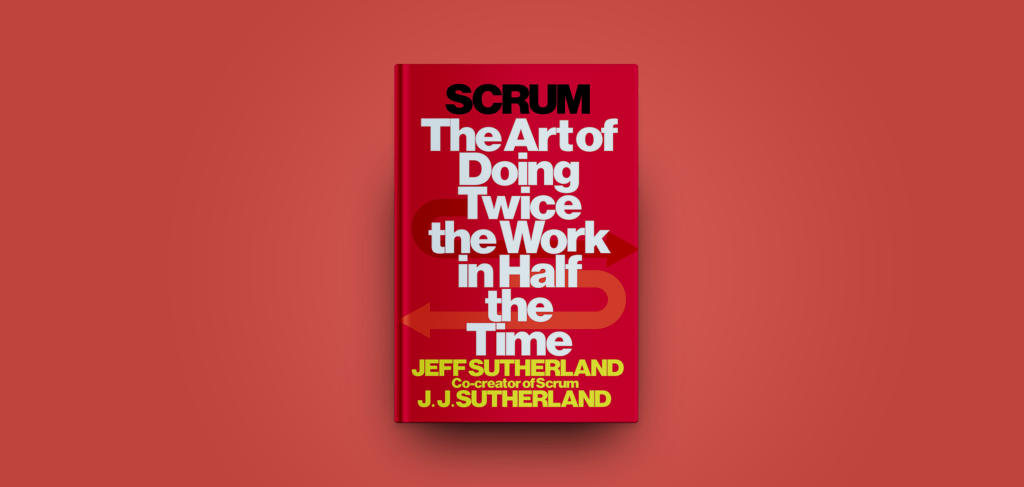This article is a review of “Scrum – The Art of Doing Twice the Work in Half the Time” by Jeff Sutherland.

In an earlier article I referred to this book by its somewhat misleading title. Scrum emphasizes delivering value and improving the overall process over simply increasing output or doing more work in less time. The book’s title emphasizes efficiency and productivity, but these are not Scrum’s primary goals. However, I did write that the title serves as a ‘manager magnet’, drawing the attention of traditional, efficiency-driven managers. “Whoa, doing twice the work in half the time – ka-ching?” – it sounds like a Taylorist’s wet dream.
Fortunately, the book does not deviate from Scrum’s focus on value and continuous improvement, but rather tells a detailed (back)story about the framework’s benefits. As such, I consider it a Trojan horse designed to land on the nightstands of executives all over the world.
But does the book live up to expectations? And who exactly is it for?
A comprehensive introduction
Jeff Sutherland’s “Scrum – The Art of Doing Twice the Work in Half the Time” is a thorough introduction to the Scrum framework. Jeff Sutherland is a Scrum co-creator with decades of experience implementing the framework in a variety of organizations. The book provides concrete tips and techniques for applying Scrum principles and is written in an easy-to-understand style that makes the Scrum concept accessible to readers of varying levels of experience. I really appreciate Sutherland’s use of real-life examples from a variety of industries to illustrate concepts and techniques. It has the potential to inspire and motivate readers to apply Scrum principles to their own work and teams.
Sutherland’s writing style is simple, practical, and entertaining. He writes in a conversational tone that makes the book easy to read while also providing insight into his personal experiences developing and implementing Scrum. He uses anecdotes throughout the book to illustrate his points and to provide real-world examples of Scrum in action. These are frequently humorous and provide a fresh perspective on the framework’s challenges and benefits. This makes the book more enjoyable to read while also providing a relatable context for the concepts he explains.
The book does not provide in-depth coverage of the framework, which I would consider a feature rather than a flaw. If you’re looking for that, there’s plenty of literature available that delves into the framework and how to implement it. The book succeeds as a comprehensive introduction to the framework.
Who is the target audience?
“Scrum – The Art of Doing Twice the Work in Half the Time,” in my opinion, is written primarily for managers. The book’s title, which alludes to the efficiency and productivity benefits of the Scrum framework, is a dead giveaway. The book does provide some insights into how Scrum can be used to increase productivity, albeit between the lines.
One of the book’s strengths is that it includes concrete examples and case studies of Scrum in action. The author draws on his own experience implementing Scrum in organizations ranging from startups to large corporations to provide insights into the framework’s challenges and benefits. Sutherland does an excellent job of dissecting Scrum’s various components and explaining how they work together to help organizations deliver high-quality products more quickly and efficiently. The book is well-organized and easy to read, making it an excellent choice for managers who are new to the framework.
This is not to say that the book isn’t useful for Scrum practitioners. Scrum Masters, Product Owners, Developers, and other agile professionals may find the book useful. Its practical insights and real-life examples can help many practitioners gain a basic understanding of the Scrum framework. It also gives an excellent insight into the mind of one of Scrum’s co-creators.
Conclusion
“Scrum – The Art of Doing Twice the Work in Half the Time” is an excellent resource for anyone looking to improve their development process. The book provides a clear and comprehensive understanding of the framework, albeit at a basic level, as well as some practical tips and insights. If you’re looking for a nice book to give to your management, this is a good one. ⭐⭐⭐
